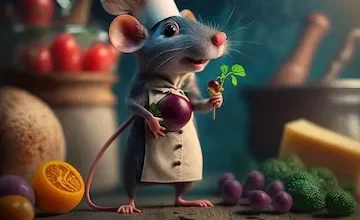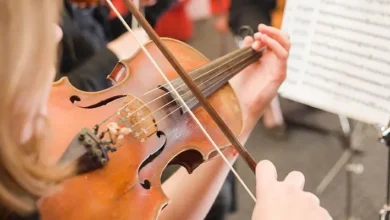The Fascinating Social Structure of Muryans: A Deep Dive into Their Colony Life

Introduction to the Muryans and their unique social structure
Muryans are remarkable creatures that have captivated scientists and nature enthusiasts alike. These tiny beings, often overlooked in the grand tapestry of life, possess a social structure as intricate as any human society. From their complex colonies teeming with activity to their unique roles within the community, Muryans offer us a fascinating glimpse into cooperation and organization in the animal kingdom. As we explore their world, we prepare to be amazed by how these tiny insects create vast networks of support and survival while displaying behaviors that mirror our social interactions. Welcome to the captivating universe of Muryans!
The Role of the Queen: Leader, Mother, and Provider
The queen is the heart of the Muryan colony. She embodies leadership, nurturing, and sustenance.
Her primary role is to reproduce. The queen lays thousands of eggs throughout her life, ensuring the survival and growth of her colony. Each egg holds potential for future workers or soldiers.
Beyond reproduction, she also acts as a guiding force. Workers look to her for cues about their responsibilities within the hive. Her pheromones influence behavior, creating harmony in daily activities.
In times of need, the queen adapts. If food becomes scarce, she can adjust her egg production to match the available resources. This flexibility showcases not only her strength but also the strategic thinking vital for survival.

Muryans thrive under this structured yet dynamic leadership model that hinges on a single figure’s capabilities and instincts.
The Different Castes within the Colony: Workers, Soldiers, and Reproductives
Muryan colonies are a marvel of social organization, distinguished by their caste system. Each caste plays a crucial role in the colony’s survival and success.
Workers form the backbone. They tirelessly gather food, maintain tunnels, and care for larvae. Their commitment keeps the colony thriving.
Soldiers stand guard against threats. Equipped with powerful mandibles, they defend their home from intruders. Their bravery is unmatched as they protect their queen and fellow Muryans.
Reproductives are vital for continuity. The queen lays thousands of eggs to ensure future generations. This reproductive prowess guarantees that the colony remains strong over time.
Together, these castes exemplify cooperation at its finest within Muryan society. Each group understands its responsibilities and works harmoniously towards a common goal: the prosperity of their community.
How Muryan Colonies are Built and Maintained
Muryan colonies are remarkable feats of engineering and organization. These tiny architects use their bodies to construct intricate systems supporting their communities.
The process begins with scouting workers who seek out suitable locations. Once they find a spot, the colony embarks on an ambitious building project that often lasts for years.
Muryans create tunnels and chambers using soil, plant material, and even bits of dead insects. Each structure serves a specific purpose: nurseries for larvae, storage rooms for food, or living quarters for the queen.
Maintenance is just as crucial as construction. Regular cleaning keeps disease at bay, while repairs ensure structural integrity. Worker ants frequently patrol these pathways, tirelessly upholding the colony’s well-being.
This complex interplay between labor and architecture highlights how teamwork is central to Muryan survival in diverse environments. Their commitment truly reflects an extraordinary social effort among tiny beings.
The Importance of Communication in Muryan Society
Communication is the lifeblood of Muryan society. These tiny insects possess a sophisticated system that allows them to convey messages precisely and quickly.
Chemical signals, known as pheromones, play a crucial role in their interactions. A single scent can alert the colony to danger or indicate food sources nearby. This ability shapes their collective behavior.
Beyond chemical cues, Muryans also engage in physical communication. They use touch and movement to relay information effectively among different castes within the colony.
Each message is vital for maintaining order and efficiency. When workers discover new resources, they inform others through intricate dance-like movements, ensuring optimal resource gathering.
Through these various forms of communication, Muryans demonstrate an impressive level of coordination that facilitates survival and growth within their complex social structure. The intricacy of their communicative methods highlights how essential collaboration is in thriving societies.
Interactions with Other Species Muryans
Muryans are not solitary creatures. They inhabit a world bustling with various species, competing and cooperating. Their interactions often revolve around resource sharing and territorial disputes.
These ants have been observed forming alliances with other insects, particularly aphids. Muryans protect these tiny sap-suckers from predators in exchange for the sweet honeydew they produce. This relationship exemplifies mutualism at its finest.
However, their aggressive side surfaces when faced with intruders or rival colonies. The soldier caste springs into action, defending their territory fiercely against any threat.
Additionally, Muryans can sometimes be found scavenging alongside other ant species or eating remnants left by larger animals. Such adaptability showcases their resilience in diverse ecosystems.
Through these interactions, Muryans demonstrate how collaboration and competition shape their survival strategies within complex environments filled with myriad life forms.
Evolution of Muryan Social Structure Muryans
The evolution of Muryan social structure is a remarkable story of adaptation and survival. Over millions of years, these fascinating insects have honed their division of labor to optimize efficiency within the colony.
Initially simple in design, Muryan societies have progressed into intricate communities with specialized roles. This specialization has allowed them to thrive in diverse habitats worldwide.
Genetic adaptations also play a crucial role. Certain traits enhance cooperation and communication among castes. The emergence of distinct reproductive classes enables colonies to increase when conditions are favorable.
Environmental pressures further shape their social dynamics. Climate changes and resource availability push Muryans to innovate new food gathering and nesting strategies.
Understanding this evolutionary journey provides insights into Muryan life and broader themes of cooperation and resilience found throughout nature.
Conclusion: Lessons We Can Learn from
The intricate world of Muryans offers a rich tapestry of social structure and cooperation. Their colonies showcase remarkable organizations, where each caste plays a vital role in the community’s survival and success. The queen stands as a powerful symbol, embodying leadership and nurturing.
Observing how workers diligently forage for food while soldiers protect their homes can inspire us to appreciate the importance of teamwork. Communication among Muryans is crucial for coordinating efforts and sharing information. This aspect teaches valuable lessons about connection and collaboration in our own lives.
Interactions between Muryans and other species highlight adaptability, resilience, and coexistence—essential qualities in today’s interconnected world. As we continue exploring these fascinating creatures’ evolution, we can draw parallels with our societal structures.
The study of Muryans deepens our understanding of nature and invites us to reflect on how we foster relationships within our communities. Their way of life contains much wisdom that could guide us toward greater harmony.





